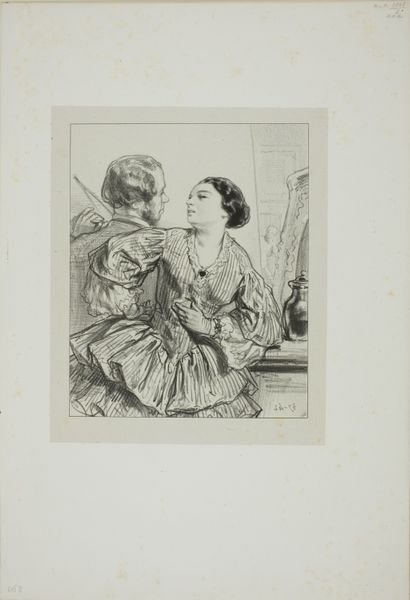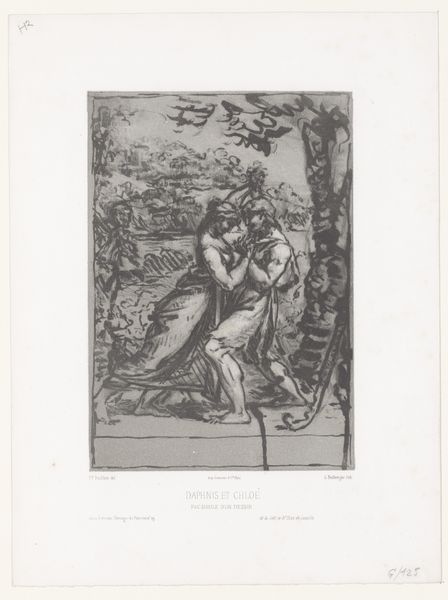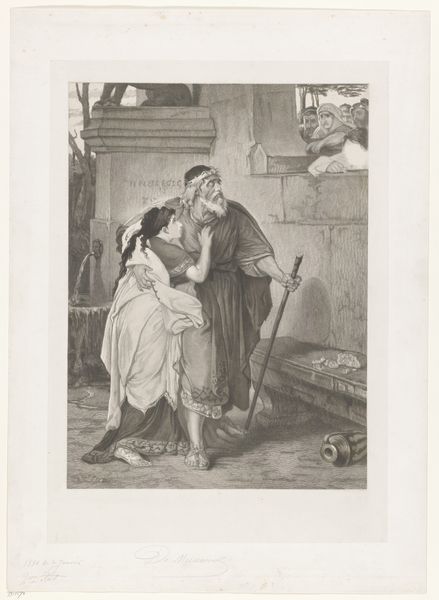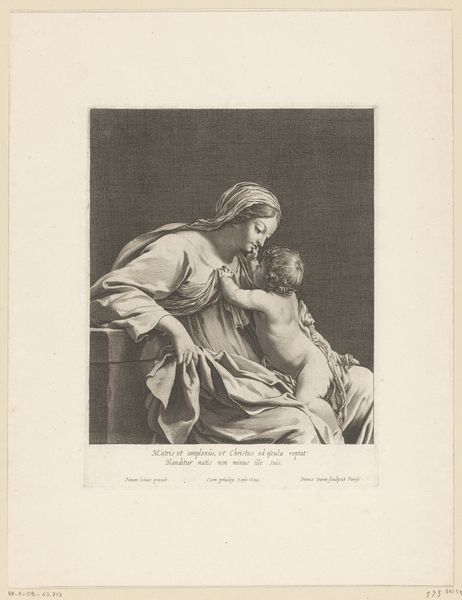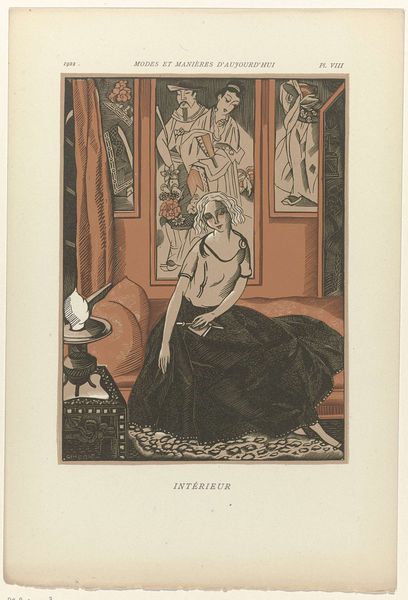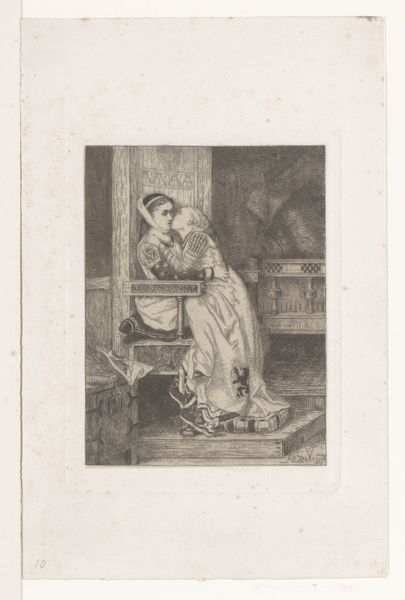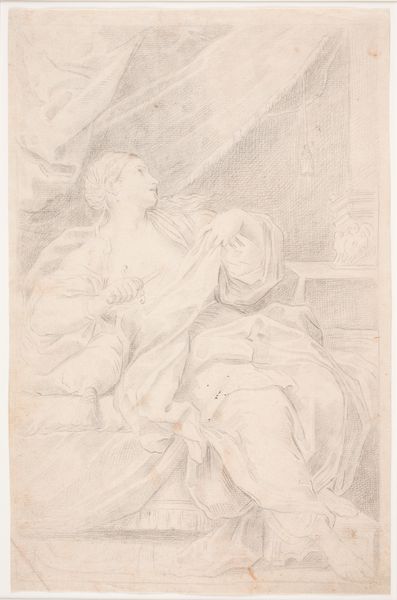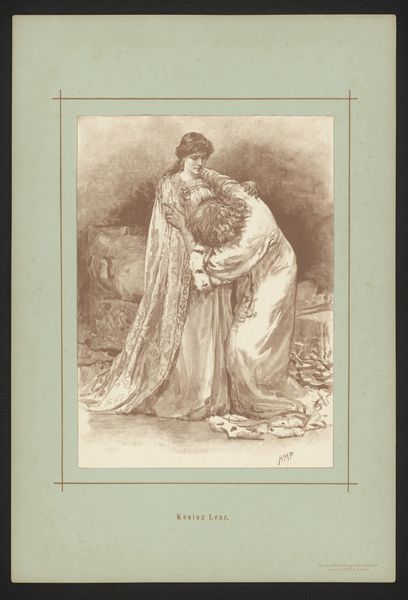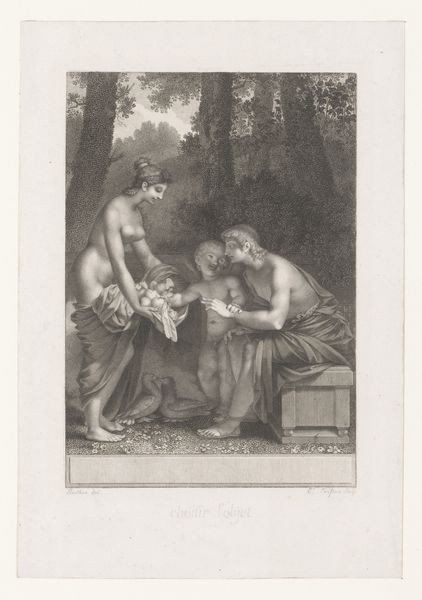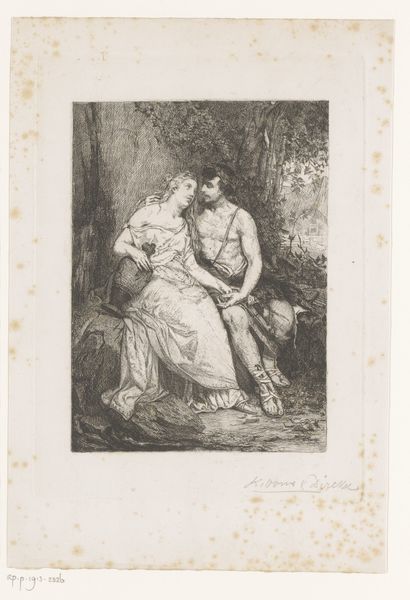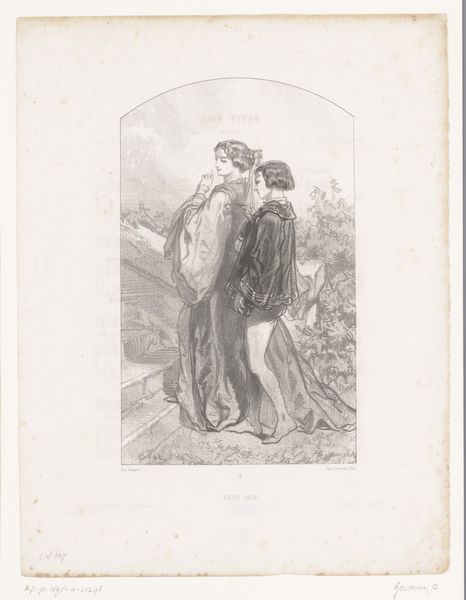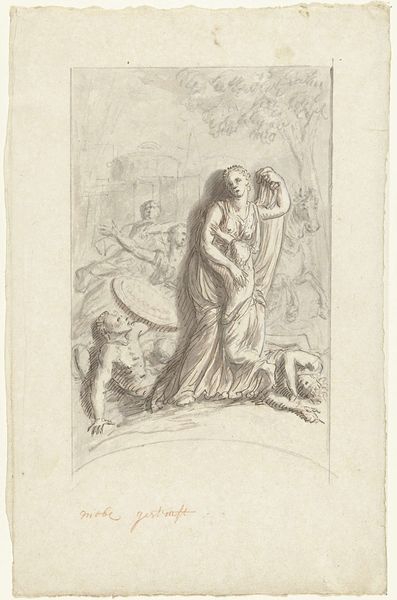
Dimensions: plate: 18 7/16 x 14 in. (46.8 x 35.6 cm) sheet: 19 1/4 x 15 5/16 in. (48.9 x 38.9 cm)
Copyright: Public Domain
Curator: Lawrence Alma-Tadema's print, "The First Whisper of Love," created in 1876, captures a scene of intimacy and affection rendered with academic precision. It’s currently housed here at the Metropolitan Museum of Art. Editor: Immediately, I'm struck by the subtle sensuality despite the classical restraint. It feels both charged and melancholic. Curator: Note the texture achieved purely through line work. As a print, the production process emphasizes the industrial aspect, multiplying the image for wider consumption. It democratizes the romanticism depicted, which in itself seems a paradox, doesn't it? Editor: It’s funny how something so mechanically reproduced can feel so personal. I see the woman’s averted gaze, her delicate fingers interlaced with his... there's a vulnerability, a shared secret that pulls me in. Almost like I'm eavesdropping on a very tender moment. The figures’ draped robes are beautifully rendered. It begs the question: were such garments industrially produced? Or tailored in home settings for more upper class buyers? Curator: It raises important questions about production of value, artistic and material, the cultural associations of classicism, and even gendered labor in the Victorian era. Alma-Tadema, of course, wasn't immune to the artistic conventions of his time. The material conditions deeply affected his artistic output and his perception within the art world of the period. Editor: Right! I am always looking at a print like this, searching for humanity—looking past the academic rigor, the staged romance. It's the woman’s slightly pained expression—perhaps not yet ready for love, perhaps already heartbroken –that really captures my imagination. I think it transcends its historical context and whispers to our own experiences of intimacy and doubt. Curator: The very choice of printmaking, then, invites consideration of the artist's intent: to reproduce an idealized vision on a more accessible platform, intertwining romance with the material realities of its dissemination. What lingers with me is how technique— pencil on paper–transforms a deeply personal scene into a commodity, raising complex questions about artistic production itself. Editor: For me, it is that sense of intimate, breathless anticipation before our modern, hurried, swipe-right reality, so poignantly depicted in monochrome tones that elevates the ordinary.
Comments
No comments
Be the first to comment and join the conversation on the ultimate creative platform.
